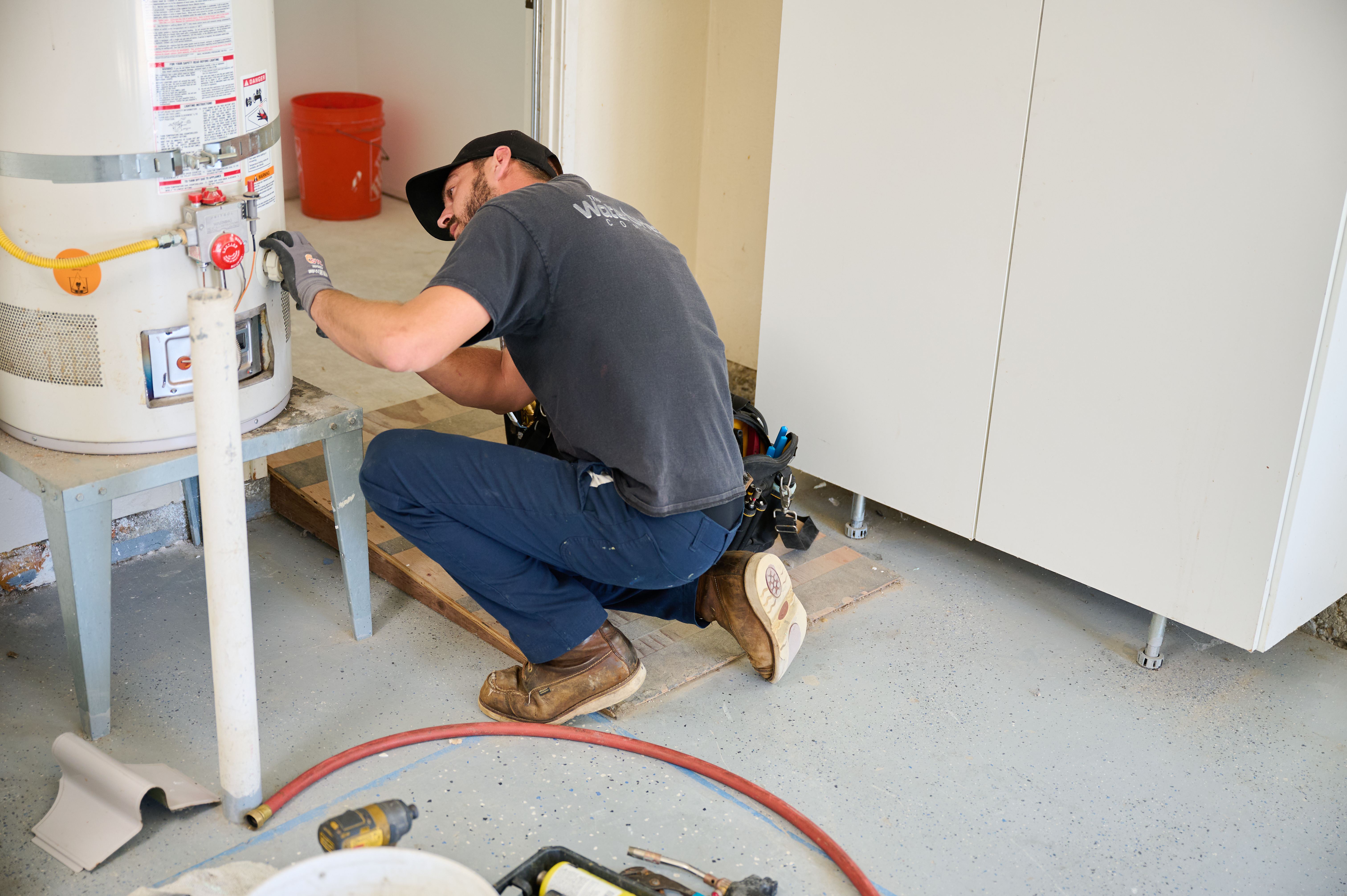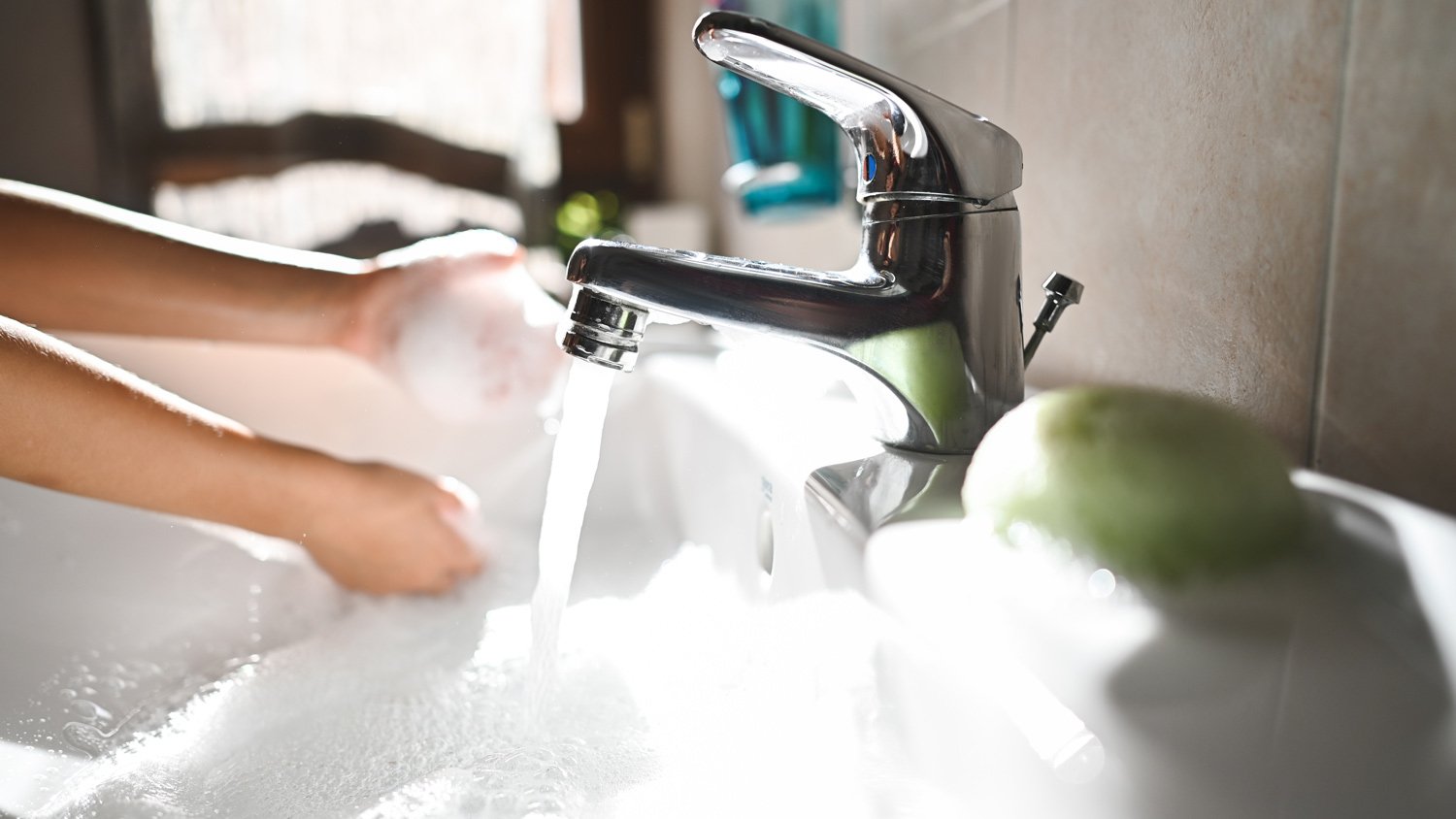
Tankless water heater costs in Columbus, OH depend on the size of your water heater, location, fuel type, and more. Keep reading to calculate your expenses.
One good flush per year should keep your water clear


You should flush your hot water heater about once a year.
Flushing a water heater is a job you can likely handle yourself.
Water heater pros charge between $75 and $200 to flush a water heater.
Flushing a water heater annually can add years to its life.
No one likes waiting several minutes for hot water to come through when they shower. By draining and flushing your water heater about once a year, you can decrease the chance of this happening. This guide will help you figure out when it’s time to flush the water heater and the key parts of the process.
Depending on some factors, once a year is a good guideline to drain most water heaters. However, if you live in an area with hard water (high mineral content), it’s better to do it every six months or so.
In general, though, an annual cleaning will help prolong the life of your water heater, prevent your water heater from leaking, and ensure hot water makes its way throughout your home. That way, the dishes (and children) can stay clean and you won’t have to wait too long to take a hot shower.
If you’re still unsure how often you should flush and drain your water heaters, check out your annual water supply report.
Water suppliers often send out an annual report by July 1 that shares information about your water. You can learn about where it comes from, its mineral content, and more through this document. Remember, if you have hard water (higher mineral content), your water heater should probably be drained and flushed more than once a year.
The report is generally attached to water bills or available for download online.
Yes. As part of your regular water heater maintenance schedule, flushing and draining your water heater regularly boosts the quality of water in your home. It could also save you money long-term, as you can prolong the life of your tank with maintenance.
However, under certain circumstances, you may need to drain or flush your hot water heater more often than recommended. Not only does the type of water heater you own factor in—you also need to consider the type of water that comes to your home.
In terms of difficulty, flushing and draining your water heater isn’t too challenging. It’ll take somewhere around an hour to complete, and much of that time is simply letting the tank cool and drain itself. A bigger tank will take longer.
While you should flush out your water heater about once a year, sometimes there are telltale signs that you shouldn’t wait for that annual maintenance.
No hot water: If your showers have gone from steaming hot to lukewarm, then it’s probably due to a buildup of sediment around the heating elements inside your water heater.
Foul odors: Are there funny smells coming from your hot water? This is a sign of bacteria in your water tank. Crank the thermostat up to 140 degrees for about eight hours to kill it off, then flush the tank.
Odd noises: No, your home isn’t haunted. Those unsettling noises coming from the attic or basement are just your water heater. When sediment builds up inside it, the particles bang against the inside of the tank, causing those disturbing sounds. Exorcise that sediment buildup from your hot water heater by giving it a good flush.
Rusty water: When you see rust-colored water come out of your tap when you turn on your hot water, it means mineral deposits are building up inside the water heater and corroding the tank (likely because its anode rod is spent). Flush out the tank and replace the anode rod.
Your water heater fills with different types of sediment, such as limestone, chalk, and gypsum. These naturally-occurring minerals found in water wind up at the bottom of your tank over time.
Sediment buildup can result in temperature loss, longer heating times, and leaks. This is because sediment deposits sit on the burner plate at the bottom of your water heater and block the flow of heat.
There are many benefits of flushing your tank periodically and only one minor drawback to consider.
Lower energy bills
Preserve your hot water heater (the average unit lasts 12 years)
Reduces noise
Improved heating speeds
Removes smelly or old water from your tank
Allows you to inspect for signs that your water heater is failing
Flushing the unit could activate a leak that debris was blocking if it’s been several years since you’ve flushed it
You’ll need to set aside at least 20 minutes to an hour to flush and drain your water heater. How long it takes to drain a water heater depends on its size. By the way: If you aren’t sure how big your tank is, a 50- to 60-gallon tank is typically big enough for two or three people.
You’ll also need to:
Know whether your water heater runs on gas or if it’s electric
Wait at least 20 to 30 minutes so the water in your tank can cool before you flush
Be ready for water to flow out at a rapid speed when you reopen the water supply—be careful
You might get a little wet, so wear gloves and put on old clothes before you get started. (For the record, one of the benefits of a tankless water heater is that they’re less messy.)

If you’re asking, “How often should I drain my water heater?” you might also be wondering how much it costs to hire a water heater pro. You’ll spend about $200 to have an expert flush and drain your water heater. Although, you might be able to score a deal depending on the season. Fall is a popular time to do it, so you’ll save money doing it another time.
If it’s been a while since your water heater has been flushed and drained, you should probably hire a water repair pro to do the job. A massive leak could force you to replace an older tank, which will cost much more than hiring a specialist. The cost to replace a water heater averages $1,255.
A local licensed water heater professional is your best bet for getting the job done correctly and safely. At the same time, you might ask them to do other water heater maintenance.
Ben Kissam contributed to this piece.
From average costs to expert advice, get all the answers you need to get your job done.

Tankless water heater costs in Columbus, OH depend on the size of your water heater, location, fuel type, and more. Keep reading to calculate your expenses.

Find out the average tankless water heater repair cost, what impacts pricing, and how to save. Get expert tips to plan your repair budget with confidence.

While solar water heater costs are a bit higher than a standard system, this energy-saving option could pay for itself in a few years. Here’s what you need to know.

Are heat pump water heaters worth it? These energy-efficient systems help you save on utility bills. Here’s why heat pump water heaters are worth it.

Purchasing a water heater warranty to protect yourself against unforeseen repair costs might not seem important, but it could save you big bucks in the long run.

Learn how much electricity the average water heater requires to run, plus how to calculate the daily and monthly cost to run your water heater.